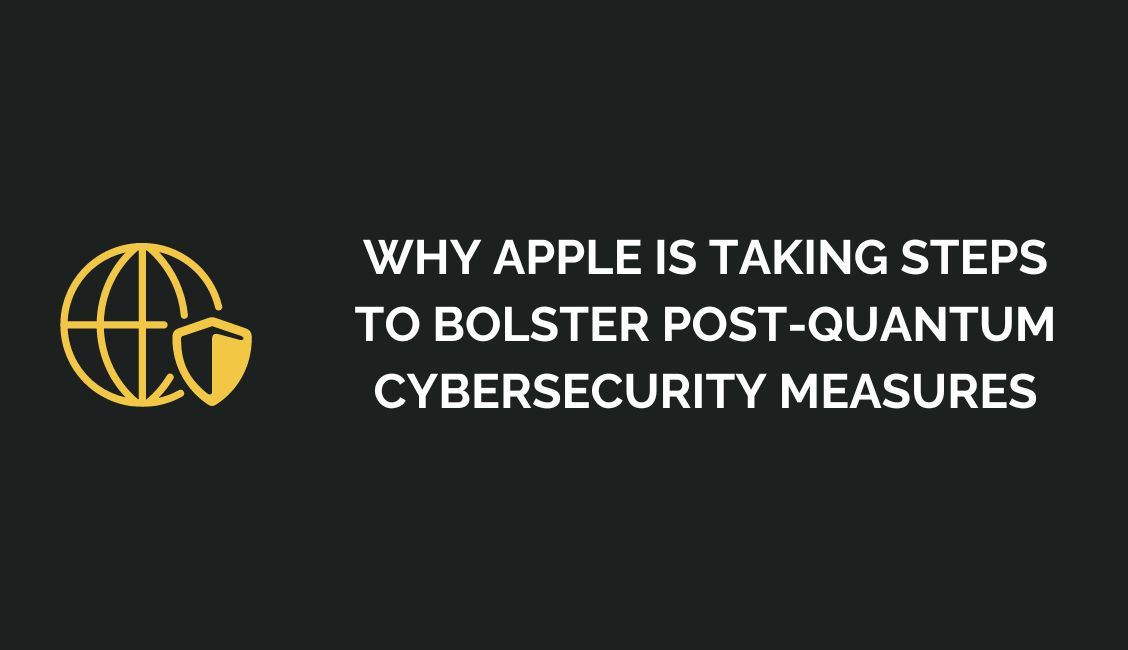Cybersecurity remains a paramount concern for tech giants worldwide in a rapidly evolving digital landscape. Recent developments suggest that Apple is taking proactive steps to bolster the security of its iMessage app, particularly against potential threats posed by quantum computers. This move aligns with the company’s commitment to ensuring user privacy and safeguarding sensitive information from the evolving landscape of cyber threats.
Quantum Knight is a leading post-quantum cybersecurity software provider. We make securing your information as easy as a right-click and accessing that information as easy as a double-click. Learn more about Quantum Knight at www.quantumknight/io.
The Threat Apple Is Facing
The tech giant, known for its commitment to user privacy and security, is confronting a new breed of threats emanating from the realm of quantum computing. In a bid to safeguard user data from potential attacks by high-powered hackers armed with quantum computers, Apple is updating the security protocol behind its iMessage app. The move aims to thwart “harvest now, decrypt later” attacks, a concern rooted in anticipation of a future quantum computing era dubbed “Q-day.”
Quantum Computers and Their Uniqueness
Quantum computers redefine computation rules by operating at the intersection of quantum mechanics and information theory. At the heart of their uniqueness lies the qubit, a quantum unit of information. Qubits exist in a superposition state, unlike classical bits, representing both 1s and 0s simultaneously. This inherent duality allows quantum computers to explore a myriad of possibilities concurrently, providing an exponential leap in processing power.
Entanglement, another quantum phenomenon, amplifies computational prowess. When qubits become entangled, their states become interconnected, facilitating collective computations. This characteristic, coupled with the uncertainty principle, introduces a layer of unpredictability crucial for quantum communication yet poses challenges to conventional encryption.
As quantum computers march towards achieving quantum supremacy, their ability to outperform classical counterparts in specific tasks becomes increasingly tangible. However, their developing stage and the looming uncertainty surrounding their full potential create a paradox. On one side, there’s the promise of groundbreaking advancements; on the other, the potential to undermine the security foundations of traditional encryption. Navigating this quantum landscape demands a nuanced understanding of its unique features, presenting both opportunities and threats to the future of digital security.
Learn more about quantum supremacy here!
The AI Tidal Wave and Device Differentiation
As quantum threats loom, another technological wave crashes onto the scene – the AI tidal wave. This paradigm shift in computing introduces generative AI that promises to reshape smartphones. This represents a crucial juncture in device differentiation for Apple and its competitors. While Apple emphasizes on-device processing within its end-to-end encryption bubble, others, notably Google, lean towards cloud processing for tasks such as content scanning. The clash between these philosophies is set to redefine the iOS vs. Android debate, making user privacy a pivotal factor in the premium smartphone market.
Challenges in Adopting Post-Quantum Cryptography
Apple’s introduction of the PQ3 cryptographic protocol aligns with a broader trend in post-quantum cryptography. While these quantum-resistant protocols offer a theoretical defense against quantum attacks, their adoption poses formidable challenges. Organizations across sectors, from government and finance to telecom, face a lengthy and intricate migration path. Post-quantum encryption algorithms necessitate reevaluating authentication protocols, raising questions about integrating quantum-resistant algorithms into existing systems.
The Dilemma of Timing and Preparedness
The road to adopting post-quantum cryptography is riddled with uncertainties, leading to a dilemma of timing and preparedness. As quantum computers approach a level of power and reliability where they can dismantle traditional encryption, businesses must strike a delicate balance. While the threat is imminent, the transition to post-quantum cryptography demands careful consideration. Organizations must tread cautiously with the potential for chaos, disruption, and substantial expenses, acknowledging the need for comprehensive workforce education on quantum threats and defenses.
The Race to Q-Day
The anticipation of “Q-day” hangs over the tech industry, with no firm agreement on its arrival. Apple’s proactive move to fortify iMessage against potential quantum threats reflects a belief in the imminent arrival of Q-day. The broader industry echoes this sentiment, with organizations evaluating and implementing quantum-resistant protocols. The National Institute of Standards and Technology’s initiative for standardized public key algorithms signals a collective acknowledgment of the need to fortify cryptographic measures in anticipation of quantum advancements.
As the quantum and AI landscapes converge, Apple’s strategic moves in fortifying its iMessage app underscore the importance of staying ahead of the curve. Quantum threats, the AI tidal wave, and the race to Q-day collectively shape the tech industry’s future. Staying informed, adopting a measured approach, and embracing proactive security measures will be paramount for organizations and users alike.
To invest in post-quantum cryptography for your company or organization, choose a provider like Quantum Knight. We make cybersecurity easy; just right-click to encrypt. Try our system for free for 30 days by visiting www.quantumknight/io!
